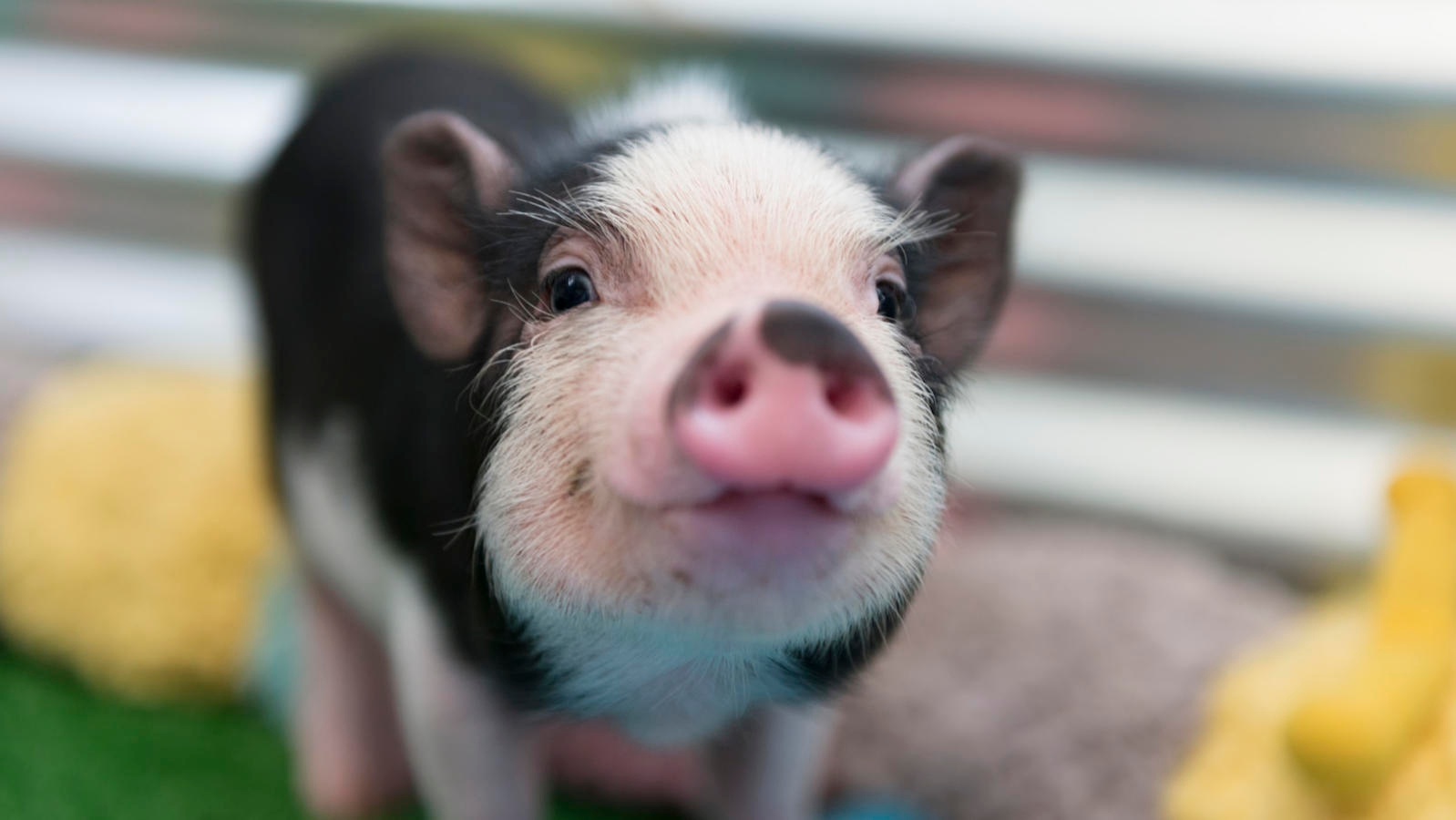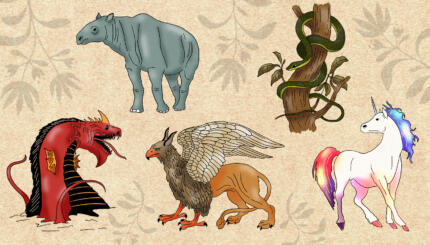Commentary on Parashat Shmini, Leviticus 9:1-11:47
“And the swine–although it has true hoofs, with the hoofs cleft through, it does not chew the cud: it is unclean for you.” (Leviticus 11:7) Pig: the treife animal par excellence! Of all the rules of kashrut (Jewish dietary law), the prohibition against eating pork has perhaps the deepest resonance for Jews. Historically, the refusal to eat pork has been understood as a symbol of Jewish identity.
During the persecutions of Antiochus IV that form the background to the Hanukkah story, Jews accepted martyrdom rather than eating pork in public, since they understood this action as a public renunciation of their faith. Even today, many Jews who do not observe other laws of kashrut nonetheless refrain from eating pork. When we open Parashat Shmini, the first section of the Torah in which the laws of kashrut are discussed, we might expect a lengthy exposition on the particular evils of the pig.
Why the Pig?
Instead, when we look at the prohibition against eating pork in the context of the other prohibited foods enumerated in Parashat Shmini, it suddenly seems surprising that the pig has achieved such unique notoriety. The list of forbidden foods begins with more obscure delicacies like camel and rock badger; the pig, the last of the mammals to be mentioned, seems almost like an afterthought.
Even more surprisingly, the pig does not violate the standards of kashrut as flagrantly as other animals do. The Torah teaches that in order to be kosher, animals must chew their cud and have cleft hoofs. The pig does not chew its cud, but it does have cleft hoofs — so we might expect that it would be less offensive than animals that meet neither criterion.
With your help, My Jewish Learning can provide endless opportunities for learning, connection and discovery.
The View from Premishlan
In view of this apparent contradiction, how might we understand the widespread Jewish aversion to pork? Biblical scholars have suggested an array of historical possibilities, but a story told by the Hasidic master, Rabbi Meir of Premishlan, offers a unique insight.
One Shabbat, Rabbi Meir invited a guest who had been visiting Premishlan for several weeks. During dinner, Rabbi Meir was surprised to notice that the guest seemed to be very hungry. Before coming to Rabbi Meir’s house, the guest had been staying with another member of the community, who Rabbi Meir knew to be a generous host. Why, then, should the guest have left his house hungry?
Finally, Rabbi Meir understood the reason. While the host had presented the guest with bountiful meals, he himself had eaten very little. Afraid to appear gluttonous when the host was eating so meagerly, the guest was too embarrassed to eat his fill. The host’s intentions were good, but the guest left hungry and ashamed.
Rabbi Meir taught that this story can be read as an allegory for the text in Parashat Shmini. The host who fulfills part of the mitzvah of hospitality but does not eat enough can be likened to the pig, which fulfills one of the criteria for a kosher animal but does not chew its cud. Just as we are forbidden from eating pork, so too are we forbidden from behaving like the host in the story. Just as the pig is made treife because it does not chew its cud, so too, will our tzedakah be tainted if our giving brings shame upon those who would eat from our table.
When we share our bounty with others, it is our responsibility to ensure that our behavior does not embarrass them. The rabbis emphasize the importance not only of what we give, but also how we give. They even go so far as to say that it would be better not to give at all than to give in a manner that embarrasses the recipient. Giving tzedakah is always a mitzvah, but tzedakah that degrades the recipient can never be fully kosher.
Perhaps the reason that the host ate so little was not that he had no appetite, but rather that he did not want to eat his dinner together with a stranger. Perhaps he ate a full meal later, after the guest had gone and his own friends had arrived. He was willing to give the guest a full plate of food but not to share a meal with him. Because he insisted on seeing the guest as a separate “other,” he was unable to see the impact of his behavior.
In El Salvador
Like the town of Premishlan, AJWS provides unique opportunities for breaking bread with others across the boundaries of community. As a recent volunteer on an AJWS delegation, I was welcomed warmly into the home of a Salvadoran family who cooked kosher meals for their Jewish guests. Unlike the host of Premishlan, my host mother, Isabel, never allowed me to go hungry. When I invite Isabel to my table, how do I make sure that my generosity is equally kosher?
As Westerners engaged with the developing world, we can all too easily make the same mistake as the host of Premishlan. Like the host, we may have the best of intentions, and we are eager to share our bounty. But if we objectify the poor, if we allow the differences in culture and class to obscure for us the full depth of their humanity, we run the risk of patronizing or degrading the people to whom we give.
When we risk falling into this trap, our long-disparaged pig has an important lesson to teach us. It would be easy to think that a cleft hoof was kosher enough. It would be easy to think that just giving was sufficient. To place such special emphasis on the pig as forbidden is to insist that the human dignity of all people must always be our first concern. The pig is the paradigm of triefe because it symbolizes a denial of the most important value of all–the shared humanity of the others with whom we break bread.
Provided by American Jewish World Service, pursuing global justice through grassroots change.
Hanukkah
Pronounced: KHAH-nuh-kah, also ha-new-KAH, an eight-day festival commemorating the Maccabees' victory over the Greeks and subsequent rededication of the temple. Falls in the Hebrew month of Kislev, which usually corresponds with December.
Hasidic
Pronounced: khah-SID-ik, Origin: Hebrew, a stream within ultra-Orthodox Judaism that grew out of an 18th-century mystical revival movement.
kashrut
Pronounced: kahsh-ROOT, Origin: Hebrew, the Jewish dietary laws.
kosher
Pronounced: KOH-sher, Origin: Hebrew, adhering to kashrut, the traditional Jewish dietary laws.
Torah
Pronunced: TORE-uh, Origin: Hebrew, the Five Books of Moses.
tzedakah
Pronounced: tzuh-DAH-kuh, Origin: Hebrew, from the Hebrew root for justice, charitable giving.



